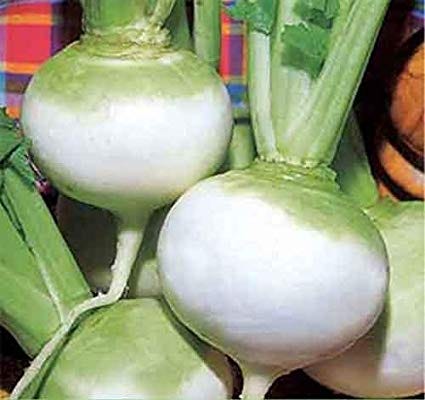The Old Turnips
England went turnip mad in the 1700s, when agronomist Arthur Young proclaimed that it would nourish Britain’s sheep in wintertime and grace the January table for humans. Turnips were grown prior to Young’s campaign, particularly in Wales. But farmers with livestock made it a staple by the 1780s. Literate farmers in North America developed an interest as well. It could be winter grown in the South and summer grown in the North. Feed turnips were sometimes left in the grown after the first frost and exhumed when need, or left for hogs to root.
What exactly were the turnip varieties grown in our region during the early 1800s. And where did farmers procure seed? Well here’s a list of varieties—a list full of strange names—with their date of introduction, name of the local broker, and geographic seed source:
_.____
Early Flat Dutch 1830 Wilson Phil
Early Spring 1820 Thornton NY- NE
Fine Early Stone 1830 Wilson Phil
Green Round 1811 Nesbet London
Green Top 1820 Thornton NY- NE [see image above]
Yellow Scotch 1820 Thornton NY-NE
Large Norfolk 1808 Wilson London
Large Silver 1800 Vale SC
Large White Flat 1819 Thornton NY
London White 1804 Wilson London
Long Transparent 1816 Wilson London
Norfolk 1800 Vale London
Red Top 1820 Thornton NY- NE
Red Top Tankard 1825 Wilson Liverpool
French, or Hanover 1820 Thornton NY- NE
Short Top 1808 Wilson London
Snowball 1848 Landreth PA
Strap Leaf 1849 Dawson Liverpool
Swan’s Egg 1837 Wilson NY
White Scotch Globe 1823 Robb ?
White Top Tankard 1825 Wilson Liverpool
Yellow 1808 Wilson London
Yellow Stone 1811 Nesbet London
The number of turnip varieties is noteworthy. It had become an important root vegetable and intensive breeding had been undertaken in Britain and the continent. In the 21st century we tend to think of turnips being white—in part because the greatest turnips bred in the 20th century were beautifully white Japanese types (the large round Shogoin, the ball shaped snow white Tennoji, and flat round Tokyo, the delicate, fine textured white Tokinashi, and the round sweet perfectly white Hakurei. So the yellow fleshed turnips, green turnips, and red skinned pink fleshed turnips seemed oddities. While heirloom yellow turnips survive for planting, they have no following in the South because they tend to woodiness. The orange rutabaga supplies the needs of people craving a carotene hue in their cooked roots. Green turnips suffered from the market perception that they were not mature. Turnips with top color are familiar because the Purple Top Milan (a variety introduced after 1850 in the South) remains a market variety—big, hardy, and somewhat disease resistant. This turnip and the listed Green Top, Red Top, and Whit Top Tankard (all vanished varieties) lay half exposed in the soil—that part remaining exposed taking on a color different from the white root below grade.
So what could you plant now? Early Flat Dutch remains available, as does the Norfolk, The London White (white globe), The Snowball, the Strap Leaf, and the Long Transparent (now largely a feed rapa—known also as cow horn). You could also try your hand at growing a green top or a yellow turnip if you wish—but the old liabilities have not been overcome. All of these old varieties except the snowball have a coarse internal grain when compared to the modern Hakurei. But they are fine flavored when grown in good soil. There isn’t much discussion of taste quality in turnips these days, but in the early 20th century (1913 particularly) people noticed the decline in flavor as fertilizing schemes altered. Soil quality matters more for turnips than any other root crop. Living soil with the proper ph will produce a sweet mellow turnip with a hint of mint and touch of radish bite.
Favorite way of eating them—raw, thinly slice, with salt, lime juice, mint and pecan oil. Cooked I like them roasted or mashed (with cream and salt).




